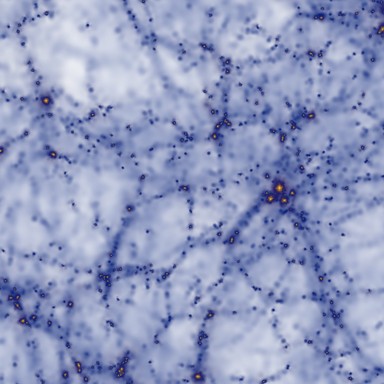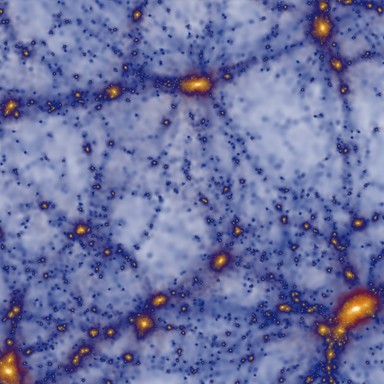Millennium-XXL Zoom
| Pixels | Points | |
|---|---|---|
| Mouse position | - | - |
| Viewport dimensions | - | - |
Highlights

|

|

|

|
About the Millennium-XXL Simulation
The `Millennium-XXL', or MXXL, is the largest cosmological simulation ever performed and the first multi-hundred billion particle run,
surpassing by a factor of 4 in particle number the largest previous simulation of its type.
The simulation follows the nonlinear growth of dark matter structures within a cubical region 4.1096 Gpc on a side.
This simulated volume is equivalent to that of the whole observable Universe up to redshift 0.72,
and is more than 200 times larger than that of our `Millennium Simulation' (Springel etal 2005) (MS),
and about 7 times larger than the expected volume of the Baryon Oscillation Spectroscopic Survey (BOSS)(Schlegel etal2007).
The particle mass in the MXXL is mp = 8.456×109 Msun, which is approximately 7 times that of the MS
but more than 1000 times smaller than that of the `Hubble Volume Simulation' (Evrard etal 2002), completed a decade ago.
This mass resolution is sufficient to identify the dark matter halos hosting galaxies with stellar masses
of ≈ 1.5×1010 Msun (DeLucia etal 2006)
(considerably smaller than the Milky Way), and also to predict robustly the internal properties of the halos
corresponding to very massive clusters, which are represented by more than 100,000 dark matter particles.
The Plummer-equivalent softening length of the gravitational force is ε=13.7 kpc,
which translates into a dynamic range of 300,000 per dimension,
or formally more than 2×1016 resolution elements within the full simulation volume.